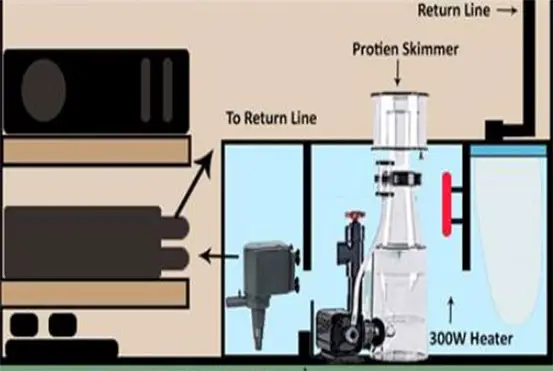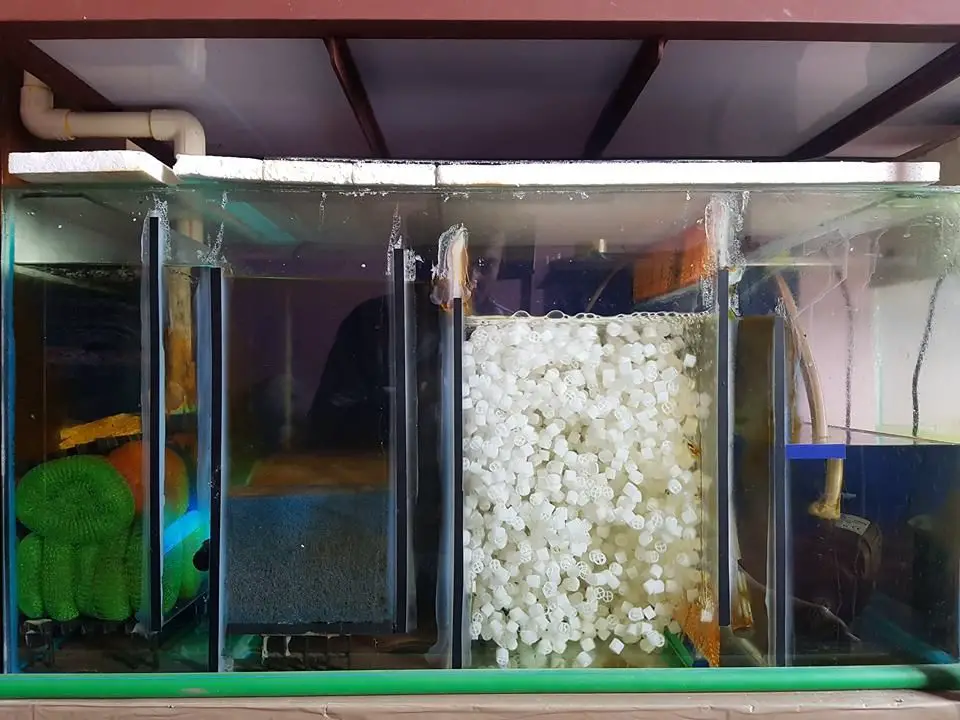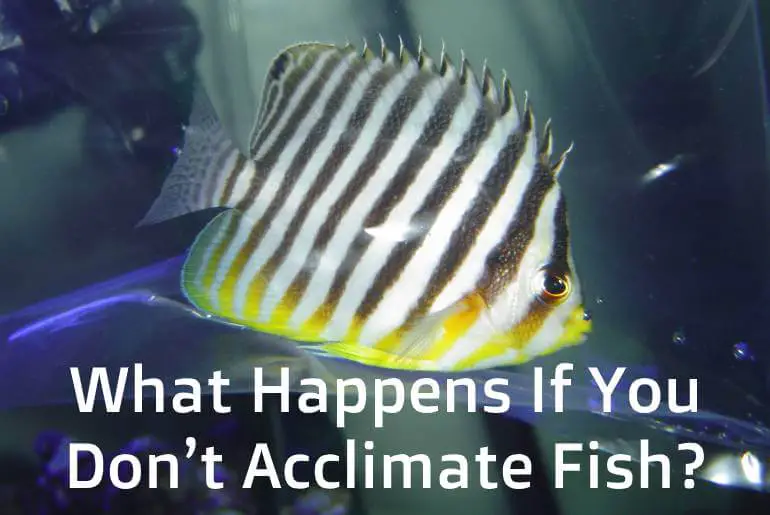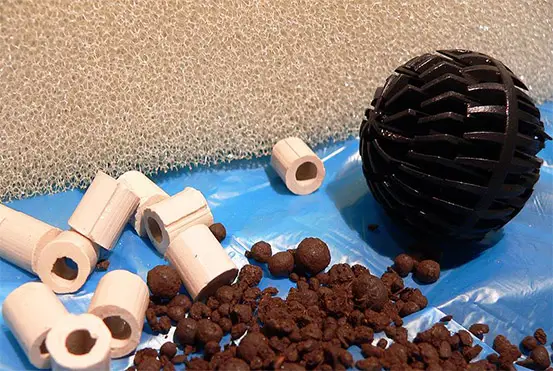Hey everybody, I am writing this article to talk about the sump application in a freshwater aquarium. I get these questions a lot from people who come to visit my shop about why I run an aquarium sump filter in my freshwater tank. Most of the people are familiar with only seeing sump on the saltwater aquarium. And here we are today to talk about freshwater aquarium sump filters.
What is an Aquarium Sump Filter?
An Aquarium Sump Filter is nothing more than a tank where you can add all your filtration system, filtration media, water pumps, and heater allowing you a clutter-free display tank. The benefit of having a big sump filter is that it will have greater dirt and beneficial bacteria holding capacity which will help in the Aquarium Nitrogen Cycle process. Aquarium sump filter is a great choice for freshwater aquarium especially if you are planning to get a big tank.
An aquarium sump filter is made from the same materials that are required when building an aquarium i.e. glass or acrylic. Sump filters are kept beneath the aquarium. Traditionally, aquarium sump filters were used in marine tanks where good water quality is essential. These days as freshwater tanks are getting better and larger. Aquarium sump filter is getting its popularity in freshwater fish keeping hobby as well due to it’s excellent, effective and efficient filtration it offers.
An aquarium sump is not an aquarium filter on itself. The sump is just a container like an aquarium with lots of baffles that contains filters or which may house other aquarium filter media or equipment.

Top Best Aquarium Sump Tank
The first thing: You can use a sum that is labeled as a reef sum filter for your freshwater aquarium. You only change certain types of equipment like protein skimmers and filter media.
So, here is the list of 5 sump tank I recommend people who visit my shop.
- Leviathan 40″ Refugium, Marine Aquarium Filter
- Pro Clear Aquatic Systems Freedom Reef Sump
- Fiji Cube Refugium Sump Baffle Kit
- Windridercreations 50 gal Refugium-Sump
- Eshopps RS-75 Reef Sump
Top Best Aquarium Sump Pump
- Orlushy DC-5000 Silent Swirl Controllable DC aquarium Pump 40W 1320GPH
- Flexzion Submersible 800 GPH Aquarium or Pond Sump Pump
- Fluval Hagen Sea Sump Pump for Aquarium
- Eheim Universal Pump 600
- Uniclife DEP-4000 Controllable DC Water Pump
How Does Aquarium Sump Filter Work? – How To Build One
When it comes to aquarium sump filters, it is all about baffles. Baffles are a device or panels in an aquarium sump filter that is used to obstruct or direct the flow of water through different filtering chambers for maximum efficiency in filtration. There are basically walls inside the sump that direct water. The size of the sump should be large enough to accommodate media equipment and additional water that drains when the power goes out.
For an aquarium sump filter to fit in your aquarium, you need to have an overflow system in your tank. In simple terms, the tank needs to be drilled through which water can escape.
The overflow water is collected in the first chamber of the sump. The first section is a good place to add good pre-filter i.e., filter media to filter aquarium waste, like filter floss, sponge or filter socks, UV sterilizers, and heaters.
The second chamber will hold biological media, typically in a submerged sump, the biological media of choice are, ceramic media, citric glass, and lava rock, something with lots of surface area. But I like to divide the second chamber into two halves. The first section would house ceramic media, lava rock, citric glass, and activated carbon. And the other section would house moving bed filter. I prefer K1 Media for this section.
The last chamber would hold your return pump.
I like to ensure all the baffles are at least one inch below the surface of the sump to allow them to overflow if one chamber gets clogged.
Since an aquarium sump filter is customizable there are few designs you can choose, and some of them being a little more complicated than others, or build them as per your need, which will also involve drilling hole in the tank. Nowadays you can purchase a fish tank that is already designed to have an aquarium sump filter installed.
What Media To Put in a Freshwater Sump
I like to call sump as the godfather of any aquarium filtration system as it is customizable. In a sump filter, you can add as much media as you can (there isn’t a limit when it comes to adding media to sump).
Here are media you can add to your sump, however, the media order needs to be in order.
Here is how you should organize filter media in your sump filter or any other aquarium filter.
First, Mechanical Filter Media:
Filter socks, Filter floss, pre-filter are some of the examples of Mechanical filter media.
Second: Biological Media:
Bio-balls, k1 media, ceramic rings, lava rocks, etc are some of the examples.
And Third: Chemical Media:
The most common filter media is activated carbon.
So, what goes in an aquarium sump depends on you. The only thing you need to care for is the order of the media.
Do You Need a Sump System?
An aquarium sump filter is a great addition to your aquarium. Having a sump filter in your system will save you a great deal of time in the long run. By far, the most important reason for having an aquarium sump filter is that it separates all the equipment from your display aquarium. It allows your tank to look cleaner, open, and free from wires that don’t match your aquarium decoration. This means you can make a completely natural-looking aqua-scape in your display tank. Using an aquarium sump filter allows you to do a water change more effectively.
Without an aquarium sump system, the tanks are limited to compact aquarium filters like power filters, or expensive canister filters, which are still more compact in size if you pay less, HOB filters, and so on. These filters won’t carry filter media as a sump filter holds. And you will be sacrificing the display of your tank by adding aquarium heaters and filters inside the display tank.
Well, if you add an aquarium sump filter, you can go crazy on adding filter media, aquarium equipment, with huge multimedia, filters, and whatever you want to add. Including temperature sensors, UV sterilizers, biological filter media, chemical filter media, mechanical filter media, and all the equipment you want to hide.
What happens to a sump when the power goes out?
When the power goes out, the sump pump stops pumping water into the display tank. The water level in the display tank will drop to the overflow level; this is why you shouldn’t drill the overflow hole too low. An overflow hole below two inches of the surface of the display tank is the perfect spot to drill.
As the tank continues to drain, the aquarium sump starts to fill up. You should always maintain a certain water level in the sump filter system since it needs to be filled with water from the main tank until it stops overflowing the water. If the level is too high, water draining from the main tank will lead your sump to overflow and fail to hold excess water. This will eventually leak on your floor which may damage your house and keeping an aquarium sump filter will be your greatest nightmare.
The First Thing You Need To Do After Setting Up The Sump Filter: Testing Sump Filter
You need to test your sump to determine if the sump filter system has a potential problem.
Test steps:
- Attach the sump filter system to your main aquarium, do all the plumbing required.
- Fill up the main tank with tap water; as you fill the tank, it will start overflowing water to the sump.
- Stop filling; when the sump is filled two inches below the surface, let the main tank drain the excess water.
- Mark the level of water in the sump, I prefer sticking a red sticker. This will be your maximum level of water in the sump when power is out and will ensure the sump will not overflow as well.
- Turn on all water pumps and skimmers in the sump. Depending on the size of your sump filter system and the capacity of your pump to pump water, the water level should have decreased by one to two-inch.
- Watch the water level in your sump as it decreases. At a certain level, the water level will remain constant. Mark it with a red sticker if the water level is at least 3 inches above the pump. This is the level you should always maintain with the sump filter is running. If the level is below three inches then add water to maintain the level.
- The sump system is an open system, so a decrease in water level due to evaporation is common. Whenever the level decreases by one inch you will need to fill the sump to maintain the water level to the red mark. Else the filter will suck air, could get exposed to air and get overheated eventually damaging your filter.
You should never fill the sump above the maximum fill mark. Now you can leave your tank and go on a weekend holiday or sleep better knowing you won’t end up with a wet floor when you return from your holiday or wake up in the morning.
Sump Size
The main reason for keeping a sump filter in your aquarium is to house all the filter equipment, filter media, and other gadgets away from your display tank. So, your sump needs to be big enough to house all the equipment you need.
Other than that, you need to make sure that the sump filter is large enough to hold all the excess or drained water when the power goes out or in case of pump failure, without overflowing the water to your floor. Who would want that?
Benefits of Aquarium Sump Filter
The main advantage of having a sump system is that it increases water volume in the system. This makes it more stable and less prone to fluctuations of pH level. And also the water movement from the main tank to the sump filter helps with the gas interchange between air and tanks water. This will increase the oxygen to get dissolved effectively in the tank water. The most important reason to have a sump is that it separates all of the technical fish tank’s equipment from the display tank. Your main tank is the display tank and the sump is the other tank that is hidden beneath the display tank.
Keeping a sump system makes your life easier and makes your life in the tank happier too. Because if you keep a sump you can go with a bigger filtration system with lots of media, big mechanical filtration, lots of biological media. And whatever you want to keep in the sump like temperature sensors, chemical sensors, UV lights, and so on.
Some of the advantages of aquarium sump filter over other filter are listed below:
-
Flexibility
Introducing an aquarium sump filter system in your aquarium system increases flexibility in terms of the use of media like ceramics rings, foam beads, fluidized moving beds (K1 media). Accommodating various accessories heater, sterilizers, and other accessories hidden from the display tank.
-
Volume
Other filters like HOB, power filters, canister filter can handle only a set volume of water. Whereas an aquarium sump system is customizable you can build as big as you require.
-
Stock levels
Introducing the aquarium sump filter in your system increases your water volume. The tank connected to the sump can be stocked above normal limits without overstocking fish.
-
Stability
Compared to other filter systems, an aquarium sump filter is much easier to maintain. It helps in maintaining water quality in a larger tank is easier than in the small one. It makes water quality stable.
How Often Should You Clean a Sump Filter?
If you ask me I don’t clean my sump filter as it does not get dirty as you think. The most dirtiest section on a sump is the first partition as it is the section where all the debris is stuck. The rest of the section where I add biological media is always clean. So, the only cleaning I do on my sump is replacing the mechanical filter media.
FAQ
How much water should be in a sump?
Never fill up your sump filter to the top. This is because, when the power goes out, the sump needs to hold overflow water from the tank. So, normally, the water level I am safe with is three-inch below the top of the tank.
Is the sump necessary for a freshwater aquarium?
I don’t say it’s necessary if you can maintain your aquarium water parameter without a sump. There are tons of benefits of keeping a sump filter in your tank than adding any of the filters you can get. I find it better than a canister filter due to its size and equipment that it can hold. So if you want extra filtration, clean display tank without equipment, add more fish to your tank then it’s necessary.
What is better a sump or canister filter?
For me, a sump filter is better compared to any other aquarium filter because it’s customizable and can hold more media than a canister filter. and most importantly, you can get the same level of filtration in a sump filter for half the price of any canister filter.
Can I keep fish in my sump?
The sump is made to hold aquarium equipment and filter media, if you want to add fish in your sump then it’s not a sump. It’s simply an aquarium beneath your display aquarium.
What do you put in a sump?
You can add anything you want in a sump, may it be a heater, or filtration equipment or filtration media.
How do you get the water out of a sump tank?
I use a siphon pipe to remove or get the water out of each partition of the sump manually. there isn’t any other method.
How do you keep a sump from overflowing?
By not filling up the tank above overflow level.
How to set the water level of your aquarium sump filter?
If you buy a ready-made sump, there will be a marking “overflow level”. This is where your water level should be. If you have customized your sump yourself then make sure the water level is at least 3 inches below the to of the tank. Likewise, the water level also shouldn’t be above the first baffle of the first partition. The water should flow from only the baffles.






